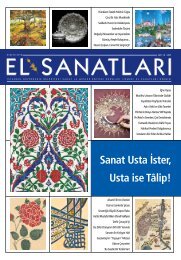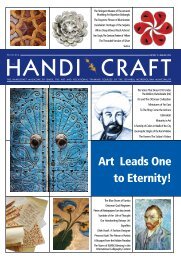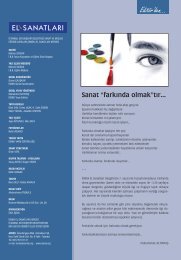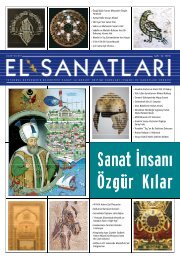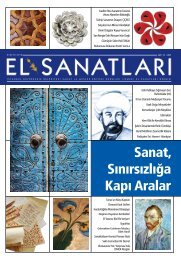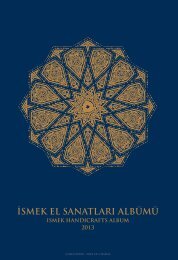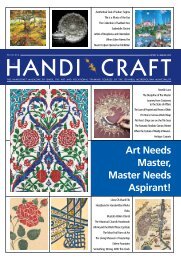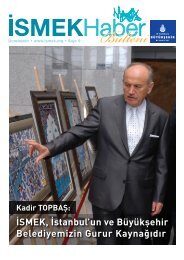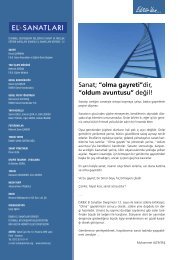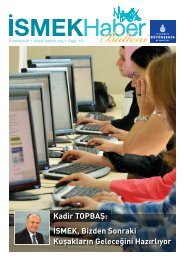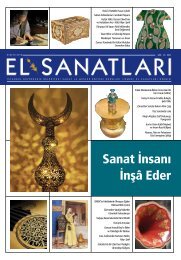Download Link - Ä°SMEK
Download Link - Ä°SMEK
Download Link - Ä°SMEK
You also want an ePaper? Increase the reach of your titles
YUMPU automatically turns print PDFs into web optimized ePapers that Google loves.
Wood panel with coat of arms<br />
west. With Sultan I. Bayezid's tughra, the part on<br />
which "Han, Muzaffer, Muzaffer Daima, el Muzaffer<br />
Daima" etc. titles are written symbolize the throne<br />
of Ottoman Empire. "El muzaffer Daima" (Ever Victorious)<br />
prayer also takes place with the name of the<br />
sultan. The tughra of Fatih Sultan Mehmed, who is<br />
the seventh sultan of Ottoman Empire, is important<br />
in terms of shape and esthetics to form the next<br />
tughras. Arms which take place in classic tughras<br />
are formed, nun letters' sanjak in "Ever Victorious<br />
Mehmed bin Murad Khan" word divide tughs, being<br />
parallel to left side arms part called as sword is<br />
formed. Tughs, sanjak, stand and arm parts which<br />
take place in classic tughras are united in Sultan<br />
II.Mehmet's signature, eggs which were inside of<br />
each other are moved away and took oval shape.<br />
Then, tughra began to take the shape of coat of<br />
arm. Around and inside of tughra is started to be<br />
decorated with a variety of motifs in Sultan II. Mehmed<br />
and Kanuni Sultan Suleyman's tughras. Arm<br />
part which had a slope shape until Sultan II. Mustafa<br />
is broken completely in this Sultan's tughra.<br />
Masterpiece of Mustafa Rakım Efendi considered as calligraphy<br />
masterwork, Sultan II. Mahmud's tughra, is accepted<br />
as the top. Near to stand part sultan's "Legal" pseudonym<br />
takes place on the arm part of the tughra.<br />
What makes tughra so successful are the different design<br />
of it with calligraphy masterpiece, even though every sultans'<br />
imprint has identification with the help of their similarity<br />
to the previous ones it give the feeling of continuity<br />
and stability. The content of tughra wasn't changed during<br />
the reign of sultan. Due to the sultan’s tughras on the<br />
documents, records' average date can be guessed easily.<br />
Printing tughra was done by the people who are called<br />
as tevkî nişancı, tuğrakeş, tuğrâî, tuğranuvis and unauthorized<br />
tughra can not be done. Nişancı had to know the<br />
laws of the State well, was in educated layer at the same<br />
time he was a member of Imperial council.<br />
Tughra Consists of Four Parts:<br />
The first section Sere (Tribune): is the text part where Sultan's<br />
and his father's name and the prayer "Shah, Khan,<br />
the ever victorious" is written.<br />
138



